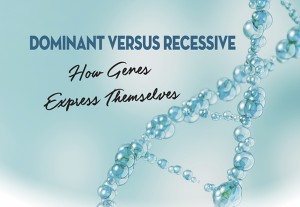Dominant Versus Recessive: How Genes Express Themselves
Click here to read the complete article
118 – September, 2022
 By William Given
By William Given
The problems which stem from a failure to fully understand the exact significance of the often-used terms, dominant and recessive, as applied to hereditary traits and characteristics seem to be greater than those falling into any aspect of breeding show dogs. In a previous article on canine genetics, I stated, “The effect of the presence of a dominant gene cannot remain hidden in its carrier.” Recently, I was questioned by a colleague who owns and shows Rough Collies. She started by saying, “I have a bitch that is not overshot, but she has thrown overshot puppies in each of her litters, though none of the dogs to which she has been bred displayed this fault.” She added, “I understand from what you say that an animal which does not show a fault of the kind will not produce it in any of its offspring, but my experience does not seem to bear this out.”
The matter of concern here seems to be the mistaken belief that the fault to which she refers is dominant to the normal mouth condition. In fact, it is recessive, and the fact that a proportion of the puppies displaying a fault which was not visually apparent in either parent is positive proof that both the sire and dam carry the genes for the fault in their genetic make-up.
When I refer to a trait as being dominant over another, I mean that when genes for both are present in the same individual, the dominant characteristic only will be visible. The other, the recessive, being masked. It is only when the recessive genes come together, in duplicate, in the same animal that a recessive trait will be evident.
Thus, the breeding of a dog and a bitch–each carrying genes for a fault which neither display–is always very likely to result in some offspring in which the fault in question will be apparent. On the other hand, the breeding of dogs with both displaying the recessive condition must invariably give rise to a litter in which all the members will resemble the parents in respect to the defect, since neither parent can possibly carry the dominant gene.
A colorful surprise
Click here to read the complete article
118 – September, 2022

Short URL: https://caninechronicle.com/?p=243672
Comments are closed











